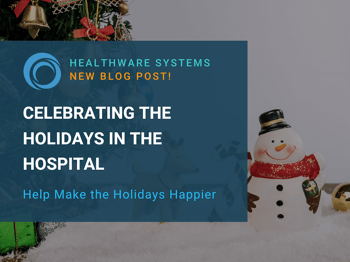11 Statistics That Reveal the Importance of Preventive Health Services
HealthWare Systems Blog
11 Statistics That Reveal the Importance of Preventive Health Services
Posted on Monday, January 7, 2019
Improving patients’ use of preventive health services can save lives and lower healthcare costs. The CDC’s website states:
“Chronic diseases, such as heart disease, cancer, and diabetes, are responsible for 7 of every 10 deaths among Americans each year and account for 75% of the nation’s health spending. These chronic diseases can be largely preventable through close partnership with your healthcare team, or can be detected through appropriate screenings, when treatment works best. Eating healthy, exercising regularly, avoiding tobacco, and receiving preventive services such as cancer screenings, preventive visits and vaccinations are just a few examples of ways people can stay healthy . . . And yet, despite the benefits of many preventive health services, too many Americans go without needed preventive care.”
Consider the following 11 alarming statistics regarding potentially preventable health issues:
The greatest preventable cause of death in the U.S. is tobacco use.
As of 2015, 15% of U.S. adults smoke.
The percentage of adults in the U.S. who do not partake in leisure time physical activity is now above 30 percent.
Only about 27.1 percent of high schoolers get the AHA’s recommended 60 minutes of exercise per day.
In the U.S., over one-third of adults and 17 percent of youth are obese.
Over 102 million adults in the U.S. have total cholesterol levels of 200 mg/dL or higher and over 35 million of these are at 240 mg/dL or above.
Nearly 50% of U.S. adults have high blood pressure.
In 2015, 9.4% of the U.S. population (30.3 million people) had diabetes. Of these, 7.2 million were undiagnosed.
Despite its connection to skin cancer, over 3 in 10 white women aged 18-21 years old, and over 2 in 10 high school girls, still use indoor tanning.
Skin cancer rates for Hispanics in the U.S. have increased by almost 20% over the last two decades. Hispanics are more likely to be diagnosed at later stages and some may believe the myth that people with darker skin don’t get skin cancer.
According to the CDC, Americans use preventive health services “at about half the recommended rate.”

Preventive health services and screenings can save lives.
The most common type of cancer (skin cancer) and most of the top causes of death in the U.S. are potentially preventable through lifestyle changes and preventive health services. Yet as these statistics reveal, many U.S. citizens remain at risk of developing these health issues (or already have).
Some of these conditions have no symptoms or mild symptoms and many people go undiagnosed. Or, they discover they’ve developed an issue at a later stage when it is harder and/or more expensive to treat.
Having a primary healthcare provider and adequate health insurance tends to increase a patient’s use of preventive health services and screenings. The social determinants of health (e.g. patient transportation needs, patient housing needs, patient malnutrition, income, geographic location) also affect preventive care use and lifestyle choices. Addressing these issues can help your facility increase patients’ use of preventive health services.
New Year’s resolutions often involve health goals, so January is the perfect time to revamp your efforts for promoting preventive health services and healthy life choices. Check out our blogs on increasing mammogram appointments, increasing preventive screenings for men, and improving male patient engagement for some great ideas to help get you started.
Make 2019 the year your facility improves patient outcomes and your bottom line through an increased use of preventive health services!
By Stephanie Salmich scl-shortcode-cleaner-clean-content-end-->

